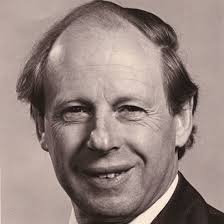Safety Moment #69: That Would Be Telling

The Kletz Legacy
One of the founders of the process safety discipline was Trevor Kletz (1922-2013). Probably his best eulogy is also the simplest, "He saved lives."
As we reflect on Trevor's contributions it is clear that one of his greatest gifts was that of telling stories. He wrote extensively on technical topics such as hazards analysis and inherent safety, but he is probably best remembered for his story-telling books such as Learning from Accidents and What Went Wrong? Human beings learn best from stories and Trevor knew it.
The lesson to do with the importance of story-telling was recently driven home for me when reading the first part of the Book of Exodus as part of a homework assignment. It's a real page turner, replete with the infant Moses in the bullrushes, the Pharaoh's daughter, the Nile full of blood, plagues of frogs and boils and locusts, the slaughter of first-born sons, and lambs' blood on doorposts. All of human life is there.
As part of the same study I read a modern, earnest, thoroughly researched book that explained these phenomena in sensible terms (for example, the "blood" in the Nile could have been red soil washed down from the mountains of Ethiopia). The book further pointed out that there is little non-Biblical evidence of an exodus from Egypt. Guess which book caught my attention? The one that told the story, of course. The other book? Worthy as it was, I remember neither its title nor the name of the author.
The catch is that few people who work in the process industries have Trevor's communications skills. Process safety professionals typically have a technical background, often engineering; they are not skilled at story-telling and have no training in it. Probably the nearest they get to telling a story is when they have to write the report following the investigation of an incident, and then company guidelines and legal advice provide little freedom for telling a story.
Safety Communication
The need to communicate is one of the most important roles of process safety professionals. For example, most companies start formal meetings with a Safety Moment. This is an ideal time to tell a story about some process safety event.
Sources of information include:
- The Process Safety Beacon from the Center for Chemical Process Safety;
- Videos from the Chemical Safety Board; and
- Our own library of Safety Moments (many of which are analyzed in terms of the elements of process safety management.)
Elements of a Story
A properly structured story has five elements:
- Characters
- Setting
- Plot
- Conflict
- Resolution
Characters
Stories are about people. In the process industries we cannot generally reveal names and personal details for both ethical and legal reasons. However, we can often identify the persons involved with a job title such as "Operations Superintendent" or "Lead Instrument Engineer". These titles usually give the reader enough information to visualize the persons involved and what their roles and responsibilities were likely to have been.
The excellent video of the Piper Alpha catastrophe presented by Brian Appleton is very much worth watching in its entirety. But it is the final few minutes (42:12 to 46:03) that are the most attention-grabbing because the whole tragedy is cast in human terms.
Setting
The setting is where the action takes place. The location for process safety events is usually clearly defined and can often be associated with pictures or videos. (There are exceptions. If one of the causes of an event was a design error, then the setting is likely to be a nondescript, air-conditioned office in a suburban office park.)
Conflict
It is unusual for a process safety event to involve conflict between people (although it was a factor in the Deepwater Horizon catastrophe). However, conflicting departmental goals are often a factor - particularly the perceived clash between safety and "getting the job done". We may instill the mantra, "There's always time to do a job safely" into people. But they do not always behave that way.
Plot
Events in the process industries may not have a plot in the sense of anticipating what happens. After all, it is usually the conclusion in the form of a fire or explosion that raises the initial awareness. Nevertheless the multiple parallel timelines that converge on the final event provide the makings of an excellent plot.
Of course, as Peter Cook points out in his video (2:30 to 7:26) to do with the coal mining industry, it is good if some romance can be added to the plot. This is rarely possible in the process industries.
Resolution
The stories we tell should have a resolution. In the case of major events such as Piper Alpha or Deepwater Horizon the resolution could be new ways of managing safety (Safety Cases) or the introduction of new regulations (SEMS). Even less dramatic stories should always provide guidance to better behaviors or improved management systems.
A Picture Tells a Thousand Words
Not only do people learn from stories, they also learn from pictures and videos. And this is one area where the process safety business has a huge arsenal of tools, ranging from quick safety moments to more lengthy recordings captured by security cameras. And these pictures and videos are now quickly disseminated through social media sites and then viewed on tablets and other portable devices.
You are welcome to use this Safety Moment in your workplace. But please read Use of Safety Moments.
Copyright © Ian Sutton. 2020. All Rights Reserved.
